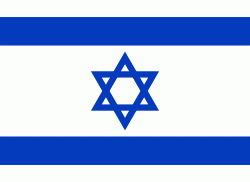Tel Aviv District (Tel Aviv District)
It is the only one of the six districts not adjacent to either the West Bank or an international border, being surrounded on the north, east, and south by the Central District and on the west by the Mediterranean Sea. The population density of the Tel Aviv district is 7,259/km2.
* Notes:
Map - Tel Aviv District (Tel Aviv District)
Map
Country - Israel
 |
 |
| Flag of Israel | |
The Southern Levant, of which modern Israel forms a part, is on the land corridor used by hominins to emerge from Africa and has some of the first signs of human habitation. In ancient history, it was where Canaanite and later Israelite civilizations developed, and where the kingdoms of Israel and Judah emerged, before falling, respectively, to the Neo-Assyrian Empire and Neo-Babylonian Empire. During the classical era, the region was ruled by the Achaemenid, Macedonian, Ptolemaic and Seleucid empires. The Maccabean Revolt gave rise to the Hasmonean kingdom, before the Roman Republic took control a century later. The subsequent Jewish–Roman wars resulted in widespread destruction and displacement across Judea. Under Byzantine rule, Christians replaced Jews as the majority. From the 7th century, Muslim rule was established under the Rashidun, Umayyad, Abbasid and Fatimid caliphates. In the 11th century, the First Crusade asserted European Christian rule under the Crusader states. For the next two centuries, the region saw continuous wars between the Crusaders and the Ayyubids, ending when the Crusaders lost their last territorial possessions to the Mamluk Sultanate, which ceded the territory to the Ottoman Empire at the onset of the 16th century.
Currency / Language
| ISO | Currency | Symbol | Significant figures |
|---|---|---|---|
| ILS | Israeli new shekel | ₪ | 2 |
| ISO | Language |
|---|---|
| AR | Arabic language |
| EN | English language |
| HE | Hebrew language |























